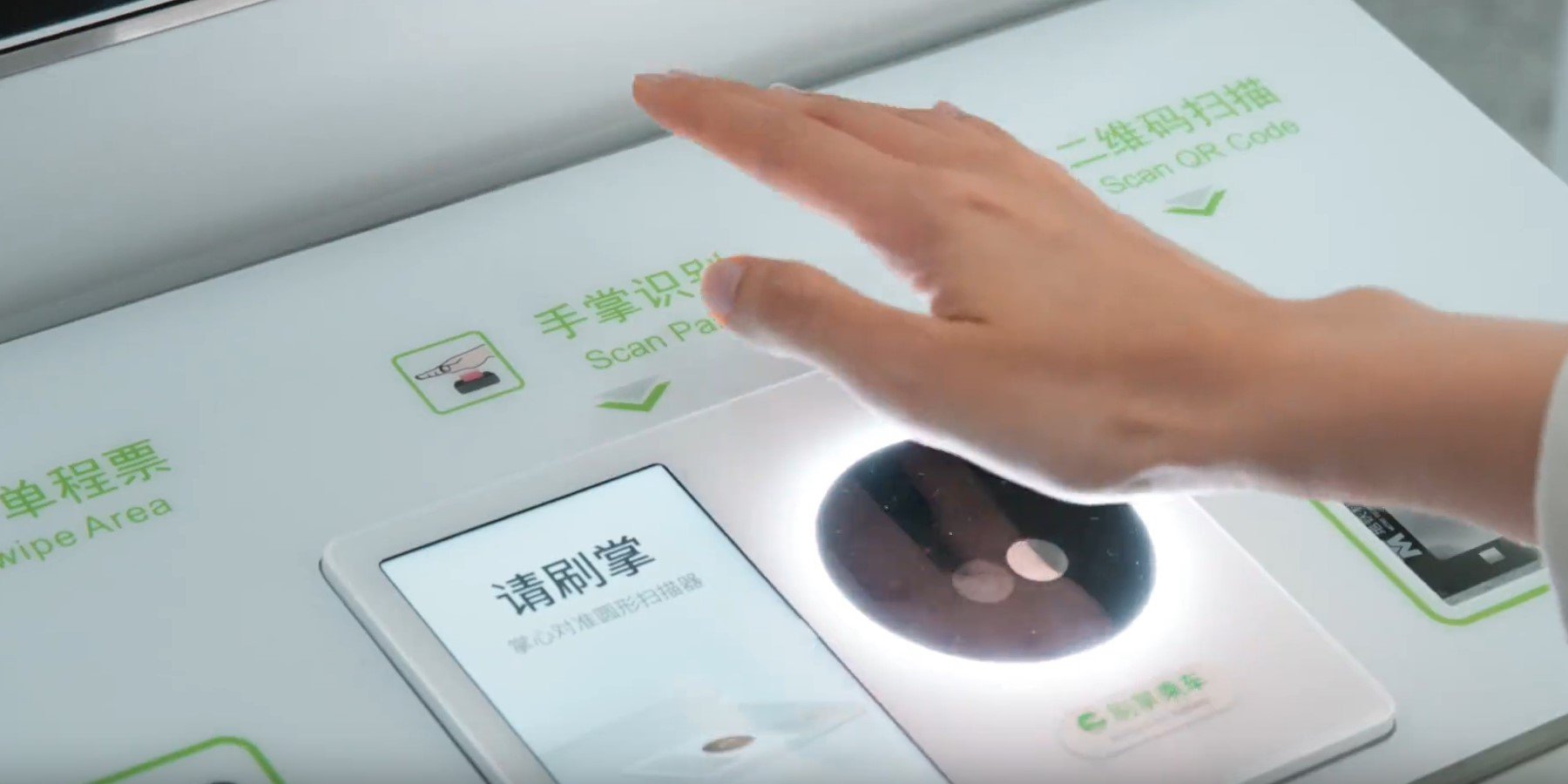WeChat Makes Facial Recog Payment Systems Talk To The Hand

Chinese microblogging site WeChat has launched the ability to make payments by swiping the palm of a hand over facial recognition devices.
After binding a WeChat account to the device and putting a palm print on record, users simply wave at a camera-embedded scanning surface to complete a purchase. The system recognizes the palm prints, veins, how one stretches their hand and other characteristics.
According to the Tencent-owned app, the feature works in various lighting conditions and adapts to physiological differences in palm prints.
"Young and old can brush," states WeChat marketing material.
The tech can also be used for boarding transport, proving attendance – for example at school, work or events – and in place of a membership card when entering places like a gym.
The biometric palm identification payment system has already been tested in Shenzhen and, according to reports, was slow to develop due to a lack of training data.
However, if the technology was ever to get a boost in development it would be over the past few years as COVID measures, including the preference to not touch surfaces and to cover faces with masks, lingered in the Middle Kingdom.
- China bins its COVID tracking app
- It's 2020, so let's just go ahead and let Amazon have everyone's handprints so it can process payments
- AWS CEO Adam Selipsky promises 'Zero ETL' future in re:Invent keynote
- Top Chinese central banker says Beijing's digital currency must be restricted to big commercial banks
WeChat is not the first to explore palm recognition. Amazon was testing it in 2020, calling it Amazon One. The technology is still around in select stores, including some Whole Foods, but US lawmakers have expressed skepticism.
In March, Amazon announced that Panera Bread had joined as the first national restaurant company to accept the payment system and use it to log loyalty points. By the end of 2023, it expects to have 10 to 20 outlets equipped for the wave and pay method.
Biometric palm payment may improve on facial recognition. After all, people don't tend to put pictures of their palms across social media, nor do they often have cosmetic surgery on their palms that might disrupt machines' ability to detect their modified mugs.
Still, there are plenty of security concerns. Waving a hand can be a harmless gesture people don't think about but could be filmed doing. And similar to a face but unlike a credit card, a person can't change their palm just because someone has stolen their information.
According to Business of Apps,, WePay has over 900 million users and has surpassed AliPay to become the most popular Chinese payment service. Almost every shop in China accepts at least one of the two systems.
The addition of contactless payment based on palm recognition could make the rivalry even more interesting. ®
From Chip War To Cloud War: The Next Frontier In Global Tech Competition
The global chip war, characterized by intense competition among nations and corporations for supremacy in semiconductor ... Read more
The High Stakes Of Tech Regulation: Security Risks And Market Dynamics
The influence of tech giants in the global economy continues to grow, raising crucial questions about how to balance sec... Read more
The Tyranny Of Instagram Interiors: Why It's Time To Break Free From Algorithm-Driven Aesthetics
Instagram has become a dominant force in shaping interior design trends, offering a seemingly endless stream of inspirat... Read more
The Data Crunch In AI: Strategies For Sustainability
Exploring solutions to the imminent exhaustion of internet data for AI training.As the artificial intelligence (AI) indu... Read more
Google Abandons Four-Year Effort To Remove Cookies From Chrome Browser
After four years of dedicated effort, Google has decided to abandon its plan to remove third-party cookies from its Chro... Read more
LinkedIn Embraces AI And Gamification To Drive User Engagement And Revenue
In an effort to tackle slowing revenue growth and enhance user engagement, LinkedIn is turning to artificial intelligenc... Read more

